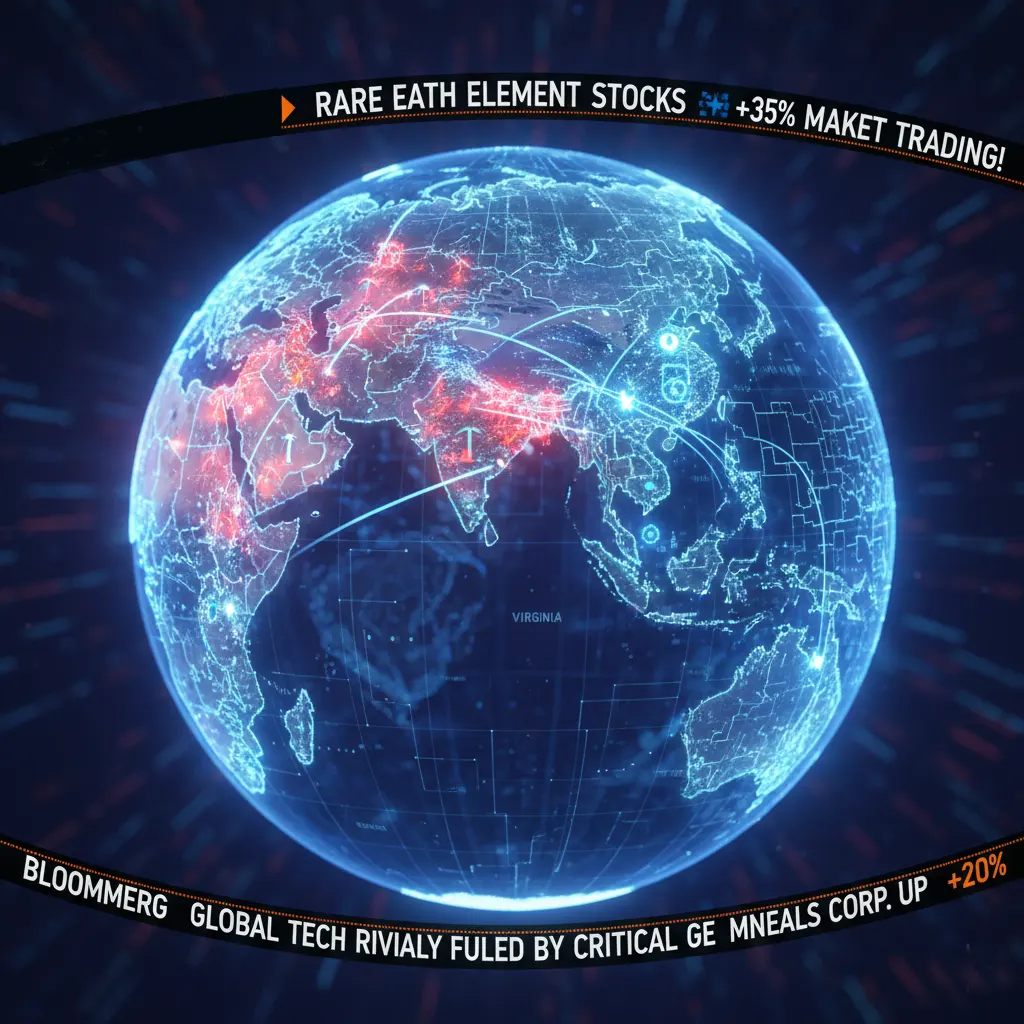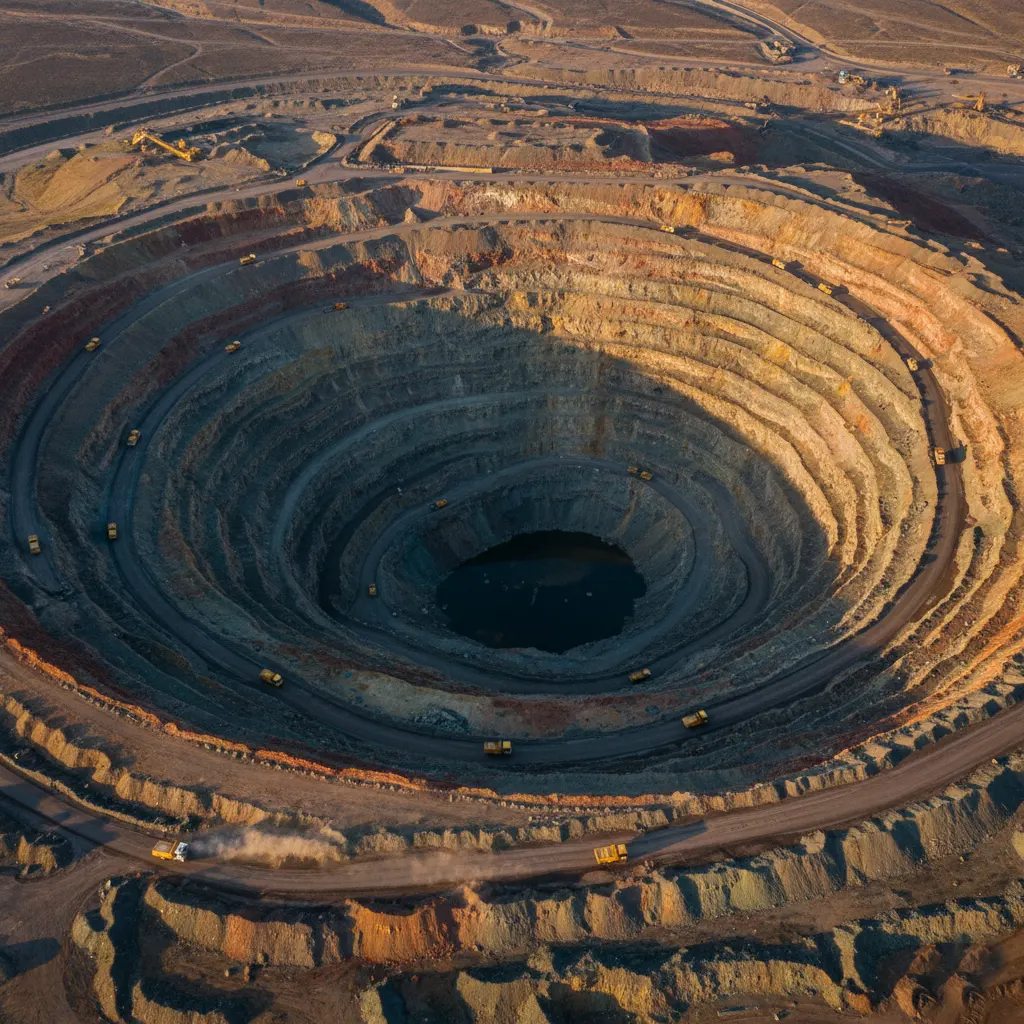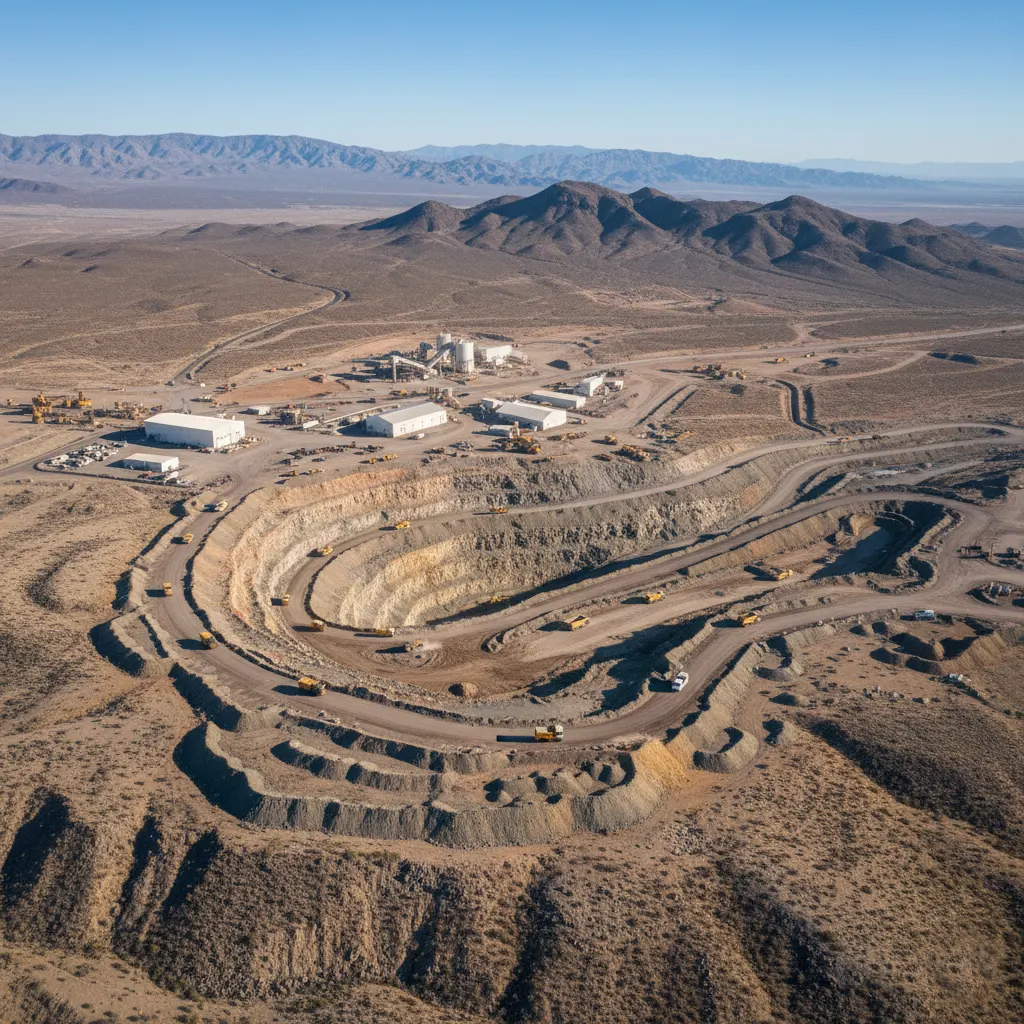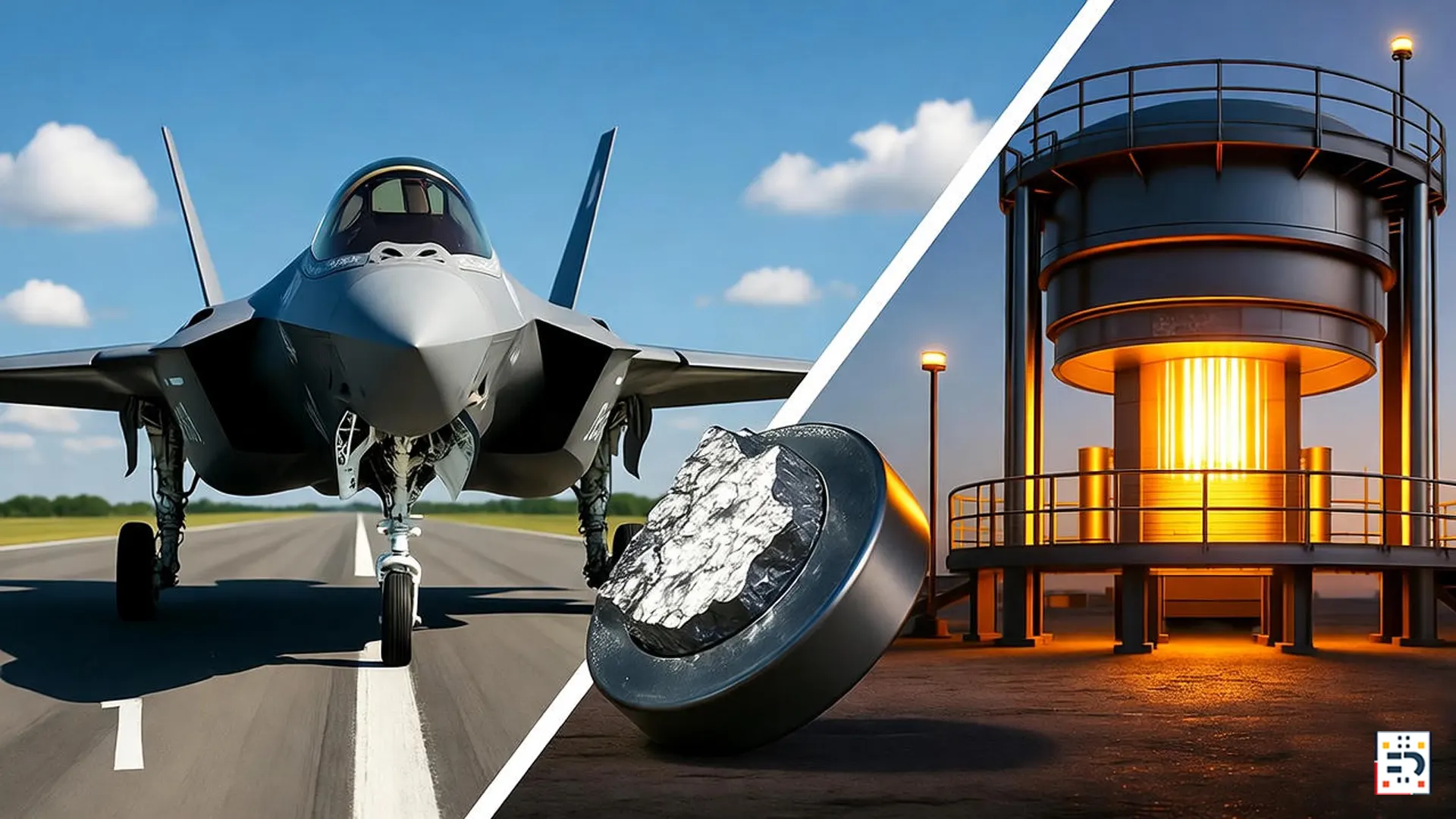Introduction: The Hidden Crisis in America’s Supply Chain
October 2025 — While most Americans focus on tariffs and trade deficits, a far more critical battle is unfolding in the US-China trade war: the struggle for rare earth elements (REEs). These 17 obscure minerals power everything from iPhones to F-35 fighter jets, and China controls over 90% of global processing capacity. As tensions escalate in October 2025, understanding rare earth minerals isn’t just for industry insiders—it’s essential for every American concerned about national security and economic independence.
Breaking News: China’s October 2025 Export Restrictions
China Tightens Grip on Critical Minerals
On October 9, 2025, Beijing announced unprecedented export controls on rare earth materials specifically targeting foreign military applications. This marks the first time China has directly restricted rare earths for defense purposes, sending shockwaves through the Pentagon and Wall Street.
The announcement came days after President Trump threatened to impose an additional 100% tariff on Chinese imports. China’s response was calculated: if Washington restricts semiconductor exports, Beijing will leverage its near-monopoly on the minerals that make semiconductors—and virtually all modern military equipment—possible.

Market Reaction: Rare Earth Stocks Surge
The financial markets responded immediately. According to CNBC’s market analysis, rare earth stocks experienced dramatic gains:
- USA Rare Earth surged 18%
- MP Materials rallied 21%
- Energy Fuels jumped 16%
- Critical Metals soared 55%
These stock movements reflect investor recognition that rare earth supply chains have become a critical national security issue, not just a commodity play.
What Are Rare Earth Elements? Understanding the Critical Minerals
The 17 Elements That Power Modern Technology
Rare earth elements (REEs) are a group of 17 metallic elements essential to modern technology. Despite the name, these elements aren’t geologically rare—what’s rare is the capacity to extract and process them economically.
The 17 Rare Earth Elements include:
- Light rare earths: Lanthanum, cerium, praseodymium, neodymium, promethium, samarium, europium
- Heavy rare earths: Gadolinium, terbium, dysprosium, holmium, erbium, thulium, ytterbium, lutetium, scandium, yttrium
Each element has unique magnetic, luminescent, or electrochemical properties that make them irreplaceable in specific applications.

Why Rare Earth Minerals Are Irreplaceable
Unlike many commodities where substitutes exist, rare earth elements are functionally irreplaceable in most applications. Neodymium creates the world’s strongest permanent magnets. Europium produces the red color in television and smartphone screens. Terbium enables laser precision in military targeting systems. No known alternatives can match their performance.
China’s Rare Earth Dominance: The Numbers Behind the Monopoly
Understanding China’s Market Control
The statistics reveal America’s dangerous dependency:
- 70% of global rare earth mining occurs in China
- 90% of rare earth processing is controlled by Chinese facilities
- The United States imports approximately 80% of its rare earth compounds from China
This wasn’t an accident of geology. According to the U.S. Geological Survey, the United States has significant rare earth deposits. However, decades of outsourcing manufacturing to China resulted in the loss of processing infrastructure and expertise.

How China Built Its Rare Earth Empire
China’s dominance resulted from strategic government investment beginning in the 1980s. While Western nations focused on environmental regulations and cost reduction, China accepted environmental costs and invested billions in processing infrastructure. The result: Beijing now controls the entire rare earth supply chain from mine to finished magnet.
The Investing News Network reports that China’s 2025 export controls targeting samarium and terbium have disrupted global supply chains, impacting sectors from automotive to defense.
Rare Earth Elements in US Defense: A National Security Crisis
The F-35 Fighter Jet’s Hidden Dependency
The F-35 Lightning II, America’s most advanced stealth fighter, requires approximately 920 pounds of rare earth elements per aircraft. These materials power:
- Advanced radar and targeting systems
- Laser-guided precision weapons
- Permanent magnets for flight control systems
- Stealth technology components
- Communications and electronic warfare systems
Without access to rare earths, production of America’s premier fighter jet would halt.
Military Applications Across All Branches
Rare earth elements are embedded throughout the US military:
Naval Systems: Destroyers and submarines rely on rare earths for sonar, guidance technology, and advanced propulsion systems. The Virginia-class submarine program depends on uninterrupted rare earth supplies.
Precision-Guided Weapons: From Tomahawk cruise missiles to JDAM smart bombs, guidance systems require rare earth elements. Elements like samarium create specialized magnets that maintain properties at extreme temperatures—essential when equipment failure isn’t an option.
Night Vision and Communications: Rare earths enable the night-vision goggles, satellite communications, and radar systems that give American forces their technological edge.
The Department of Defense has recognized this vulnerability and is investing in domestic rare earth processing, but rebuilding supply chains takes years.
Rare Earth Elements and Clean Energy: The Green Paradox
Electric Vehicles’ Hidden Dependency
As America transitions to electric vehicles (EVs), rare earth demand is exploding. Every EV requires:
- 2-3 kg of neodymium for motor magnets
- 300-500 grams of dysprosium for high-temperature performance
- Additional rare earths for battery management and regenerative braking
The global rare earth elements market was valued at $3.95 billion in 2024 and is projected to reach $6.28 billion by 2030—driven primarily by EV demand.
Wind Turbines and Renewable Energy
Modern wind turbines require massive quantities of rare earths. A single 3-megawatt turbine needs approximately 600 pounds of rare earth permanent magnets. As the US expands wind capacity to meet climate goals, rare earth demand will surge.
This creates a strategic paradox: America’s transition to “clean energy independence” actually deepens dependency on Chinese rare earth supplies.
US Response: Building Domestic Rare Earth Supply Chains
MP Materials: America’s Rare Earth Champion
MP Materials operates the Mountain Pass mine in California—the only operational rare earth mining and processing facility in the United States. In July 2025, MP Materials announced a transformational partnership with the Department of Defense, positioning the Pentagon to become the company’s largest shareholder.
The Mountain Pass facility represents America’s most significant step toward rare earth independence:
- Produces 15% of global rare earth supply
- Estimated 24-year mine life
- Developing integrated processing capabilities

Department of Defense Investments
The Pentagon is aggressively funding rare earth projects:
- $120 million to Lynas Rare Earths for heavy rare earth separation in Texas
- Major investment in MP Materials for domestic magnet production
- Multiple contracts for establishing “mine-to-magnet” supply chains
According to Chemical & Engineering News, these investments represent a fundamental shift in US rare earth policy.
The Reality Check: A Decade-Long Challenge
Despite aggressive investment, experts warn that building independent supply chains will take a decade or more. Processing facilities require specialized expertise that has largely migrated to China. Environmental permitting takes years. And all of this comes at significantly higher costs than importing from China.
Economic Implications: Why Wall Street Is Paying Attention
JPMorgan’s $10 Billion Bet
Financial institutions are taking the rare earth crisis seriously. JPMorgan Chase has announced plans to invest up to $10 billion in industries crucial to reducing Chinese mineral dependency. This institutional investment signals that Wall Street views rare earth security as critical to American economic competitiveness.
Market Volatility and Investment Opportunities
The rare earth market has experienced significant volatility throughout 2025. Nasdaq reports that tariff uncertainty and Chinese export restrictions have created both risks and opportunities for investors.
Key investment considerations:
- Rare earth mining stocks have outperformed broader markets in 2025
- Processing companies face long-term growth prospects
- ETFs focused on critical minerals offer diversified exposure
For investors interested in rare earth exposure, U.S. News provides guidance on rare earth stocks and ETFs.
Global Competition: Who Controls the Future?
Australia’s Emerging Role
Australia has significant rare earth deposits and is emerging as a key partner in diversifying supply chains. Australian companies like Lynas Rare Earths are expanding processing capabilities with US government support.
The Quadrilateral Security Dialogue (QUAD)
The United States, Japan, India, and Australia are coordinating on critical mineral supply chains through the QUAD framework. This represents recognition that democracies must cooperate to counter China’s dominance.
African and South American Potential
The United States is exploring rare earth projects in Africa and South America, but political instability and infrastructure challenges complicate these initiatives.
The Trade War Timeline: How We Got Here
2010: China’s First Rare Earth Weapon
During a territorial dispute with Japan, China briefly restricted rare earth exports, causing prices to spike 1,000%. This demonstrated Beijing’s willingness to weaponize rare earths.
2019-2022: Trade War Escalation
The Trump administration identified rare earth dependency as a national security threat, launching initiatives to rebuild domestic supply chains. The Biden administration continued these priorities with additional funding.
2025: The Crisis Intensifies
October 2025 marks a turning point as China directly targets military applications with export controls. Combined with Trump’s tariff threats, the rare earth conflict has become central to US-China relations.
What This Means for American Consumers and Workers
Impact on Consumer Electronics
Rare earth shortages could affect availability and pricing of:
- Smartphones and tablets
- Laptops and computers
- Smart home devices
- Gaming systems
However, military applications receive priority, meaning consumer electronics would face supply constraints before defense systems.
Job Creation Potential
Rebuilding domestic rare earth supply chains could create thousands of high-paying manufacturing jobs in:
- Mining operations
- Processing facilities
- Magnet manufacturing
- Advanced materials engineering
States like California, Texas, and North Carolina are competing to host these facilities.
Expert Perspectives: What Industry Leaders Are Saying
Military strategists emphasize that rare earth dependency represents a fundamental shift in American defense planning. For decades, the US maintained military superiority through technological innovation. Now, that superiority is undermined by reliance on a geopolitical rival for raw materials.
Industry executives at companies like MP Materials argue that with sustained government support and private investment, the United States can rebuild rare earth independence within a decade. However, this requires political will to accept higher costs and environmental tradeoffs.
Environmental advocates note that rare earth mining has significant ecological impacts. China’s willingness to accept environmental damage gave it competitive advantages. The challenge is building US capacity while maintaining environmental standards.
Looking Ahead: Five Critical Questions for America’s Future
1. Can America Accept Higher Costs for Strategic Security?
Domestic rare earth processing costs significantly more than importing from China. Are Americans willing to pay premium prices for electronics, vehicles, and clean energy to achieve strategic independence?
2. Will Environmental Regulations Delay Supply Chain Development?
Rare earth processing generates toxic waste. Can the United States streamline permitting while maintaining environmental protections?
3. Is Technological Innovation the Answer?
Some experts believe innovation can reduce rare earth dependency through:
- Alternative magnet technologies
- Recycling programs for rare earth elements
- Substitution research for less critical applications
However, breakthrough technologies remain years away.
4. What Happens If China Completely Cuts Off Exports?
Pentagon planners have conducted classified assessments of this scenario. While details remain secret, defense experts suggest US military operations could be sustained for months—not years—without Chinese rare earths.
5. Can Democracies Cooperate to Counter China?
The QUAD framework and partnerships with Australia, Japan, and European allies offer promise. But international coordination faces political and economic challenges.
The Battle That Will Define the 21st Century
The rare earth minerals crisis exposes a fundamental vulnerability in America’s economic model. For three decades, globalization promised that economic interdependence would prevent conflict. That assumption is being tested in real-time.
China’s October 2025 export controls aren’t just about trade—they’re about power. Beijing has demonstrated that controlling critical resources can be more valuable than military might. As the United States scrambles to rebuild supply chains, time is working against American interests.
Policymakers, rare earth independence requires sustained investment, political courage to accept higher costs, and coordination with allied nations. Investors, rare earth supply chains represent a generational opportunity as billions flow into domestic processing. Ordinary Americans, understanding rare earth minerals is essential to comprehending the geopolitical and economic challenges ahead.
The nation that controls rare earth elements may ultimately control the 21st-century economy. For now, China holds most of the cards. The question is whether America can summon the resources, patience, and strategic vision to change that equation. Our military security, economic competitiveness, and technological leadership depend on the answer.
Key Takeaways: What Americans Need to Know
✓ China controls 90% of rare earth processing, creating dangerous US dependency
✓ The F-35 fighter jet requires 920 pounds of rare earth elements per aircraft
✓ October 2025 export controls represent unprecedented Chinese economic pressure
✓ Clean energy transition actually increases rare earth dependency
✓ US investments are accelerating but supply chain independence takes a decade
✓ Rare earth stocks surged in response to geopolitical tensions
✓ National security implications extend across all military branches
#RareEarthMinerals #USChinaTradeWar #CriticalMinerals #NationalSecurity #SupplyChain #RareEarthElements #MPMaterials #DefenseIndustry #CleanEnergy #ElectricVehicles #Geopolitics #MiningIndustry #TradeTensions #EconomicSecurity #StrategicMinerals


